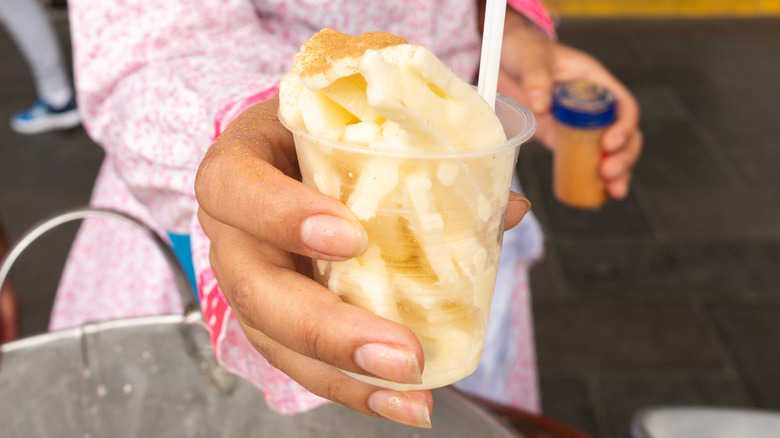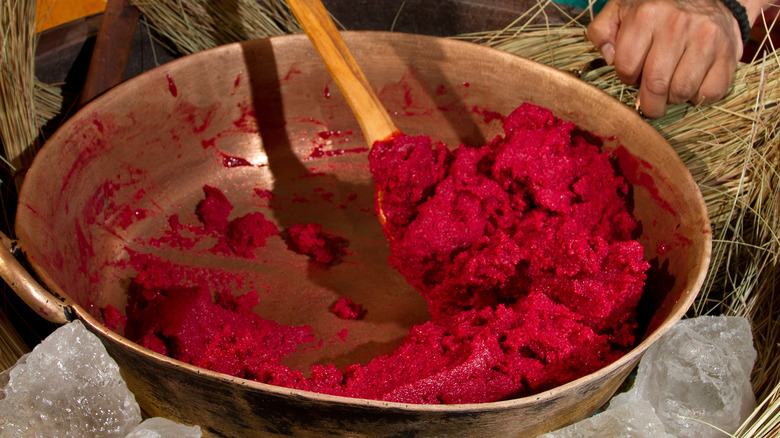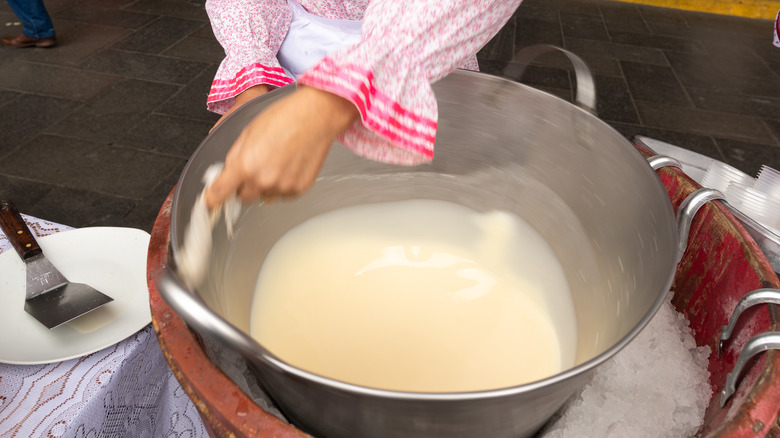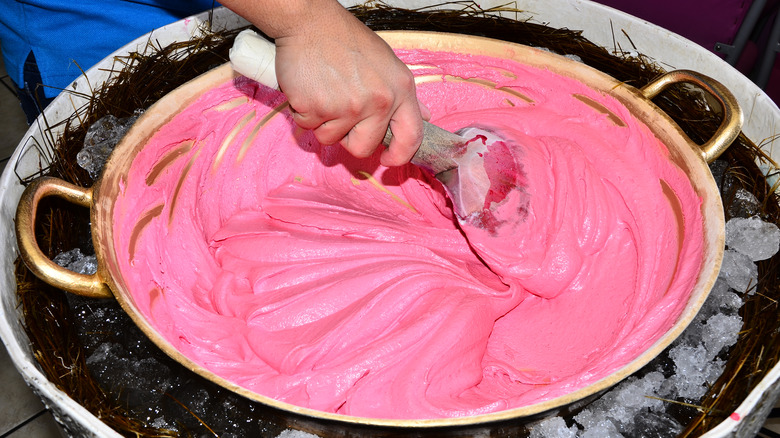Helado De Paila: The Ecuadorian Ice Cream You Should Know About
For those avoiding dairy in their diets, helado de paila could be the answer to frozen dessert cravings, as sweet servings of this Ecuadorian ice cream don't contain any milk or cream. While the cold treat originally originated in Ibarra, a city in the northern part of the country, helado de paila can now be found around the world, scooped into cups and cones and available to order in a variety of flavors (via Taste Atlas).
From the very first time this treat was churned up, not much has changed about the way helado de paila is made — with the exception of ice replacing snow that was once collected from mountainous glaciers. Artisanal, hand-made, and containing only a handful of ingredients, helado de paila is a pretty perfect response to warm summer afternoons. If you're looking for a special kind of ice cream experience, we have one for you.
What is helado de paila?
The originator of helado de paila is credited to an ingenuous teenager named Rosalía Suárez who, in 1896, had the brilliant idea of placing a large copper wok into a basin of ice, snow, and straw while continually mixing fruit juice until it hardened into a frozen treat (per Serious Eats). Her creativity and patience yielded a total culinary win: something resembling sorbet.
The name helado de paila can be translated into English as "pan ice cream" which, while descriptive, lacks some of the nuances that have since been passed down between generations — much like the paila pans, traditional copper and bronze pots that have been used in kitchens and shared within Ecuadorian families for centuries, per Not Your Average American. Similar to our two-ingredient ice cream, helado de paila is made using a handful of ingredients, and while some family recipes call for certain flavors and unique touches, the process of making the ice cream is largely the same as Suárez's first attempt.
How is helado de paila made?
Making Ecuadorian ice cream, now a decades-old process, involves setting a large pot — the paila — on top of ice and spinning it quickly while pouring fruit juice inside. With enough spinning, the juice comes into contact with pan's cold surface and eventually freezes into a thicker, frozen treat (via TravelStore). As you can imagine, the spinning process takes some patience, but the result is totally worth it.
Finding ice or snow to place inside the large basin isn't quite as difficult as in Suárez's time, and vendors can be found at stations set up in stores or roadside. Customers can order their preference of various fruit flavors: blackberry, mango, pineapple, tamarind, and passion fruit, for example. Some makers add sugar and other flavors. For more artisanal batches, shops store frozen pints, but without added preservatives, helado de paila is best served and enjoyed fresh.
What does helado de paila taste like?
Traditional Ecuadorian fruits have always found their way into helado de paila — blackberry, soursop, naranjilla, tree tomato, and strawberry — but new flavors like mochaccino, oreo, bubble gum, mint, and chocolate are appearing on helado de paila menus (per Metropolitan Touring). Without dairy or cream, helado de paila takes on a sorbet-like consistency, with the maker taking their time to whip and spin ingredients into a smooth and creamy batch.
The final taste of the treat will depend on which fruit is used to make the ice cream, how much sugar is added, and whether ice is blended into the final mixture. If you're eager to try a treat like this at home but can't imagine spinning a pan to make it, we have a dairy-free ice cream alternative: Try making a ginger and turmeric vegan ice cream to enjoy on the next hot day.



